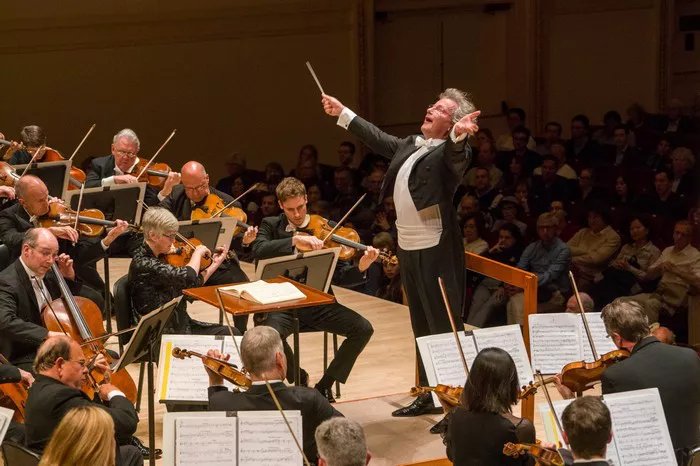Classical music, despite its rich history and undeniable cultural significance, often finds itself on the fringes of popular music culture. While its timeless compositions have enthralled audiences for centuries, it seems that the allure of classical music has faded in recent decades. In this article, we will explore the various reasons why classical music is not as popular as it once was. From shifting cultural tastes to challenges in accessibility and education, we will delve into the complex dynamics that have contributed to classical music’s struggle to find its place in contemporary society.
1. Changing Tides: The Evolution of Musical Tastes
Classical music has a long and illustrious history, with composers like Mozart, Beethoven, and Bach creating masterpieces that continue to captivate listeners to this day. However, the evolution of musical tastes has played a significant role in classical music’s decline in popularity.
In a world dominated by pop, rock, hip-hop, and electronic music, classical music often struggles to compete for the attention of modern audiences. The complexities and nuances of classical compositions can be daunting to newcomers, who may find it more accessible to listen to songs with catchy lyrics and repetitive melodies. As a result, classical music is frequently relegated to the background, reserved for special occasions or exclusive cultural events.
2. Accessibility: The Elitist Perception
One of the key factors hindering the popularity of classical music is its perceived inaccessibility. Classical music is often associated with elitism and exclusivity, a stereotype that can deter potential listeners. The idea that one must possess a deep understanding of music theory or come from a privileged background to appreciate classical music creates a barrier for many.
Concerts held in ornate, grand venues with strict etiquette further reinforce this perception. The image of a tuxedo-clad audience in hushed reverence can be intimidating to those unfamiliar with classical music. Breaking down these barriers and making classical music more approachable is essential to increasing its popularity.
3. Education: The Lost Emphasis on Music
Another crucial factor contributing to the waning popularity of classical music is the declining emphasis on music education in schools. With budget cuts and a focus on standardized testing, many educational institutions have reduced or eliminated music programs. As a result, generations of students are growing up with limited exposure to classical music.
Without proper education and exposure, young people may never have the opportunity to develop an appreciation for classical music. Music education is not only about creating future musicians but also about fostering a lifelong love for and understanding of music in all its forms, including classical.
4. Technology: The Dawn of Digital Dominance
The rise of digital technology has revolutionized the way we consume music. With the advent of streaming platforms and the convenience of on-demand music, classical music faces unique challenges. Unlike contemporary genres, classical compositions can be quite lengthy, sometimes spanning several hours. This can be a deterrent in an era of short attention spans and quick gratification.
Moreover, algorithms and recommendation systems on streaming platforms often prioritize popular and trending music over classical selections. Classical music enthusiasts may find it difficult to discover new compositions or recordings, further isolating the genre from potential audiences.
5. Cultural Relevance: The Need for Connection
Classical music is often seen as disconnected from the realities of contemporary life. While pop and hip-hop music often address current social and cultural issues, classical compositions tend to be more abstract and less directly relatable. In an age where people seek music that resonates with their experiences, classical music can sometimes feel distant and irrelevant.
To counter this, classical musicians and institutions can explore ways to make their music more relevant to today’s audiences. This might involve collaborations with contemporary artists, thematic programming, or reinterpretations of classical works to address modern themes.
6. Funding Challenges: Sustaining the Symphony
Classical music, with its reliance on large orchestras and expensive productions, faces funding challenges that other genres may not. Maintaining a symphony orchestra, for example, requires significant financial resources, often making ticket prices prohibitively expensive for many potential concertgoers.
To address this issue, organizations supporting classical music must actively seek sustainable funding models. This could involve partnerships with philanthropic individuals and institutions, exploring new revenue streams, and making strategic decisions to control costs while maintaining artistic quality.
7. Demographic Shifts: An Aging Audience
The classical music audience is disproportionately older, with younger generations showing less interest in the genre. As older enthusiasts pass away, there is a concern that classical music could face a demographic crisis. To remain relevant, it is crucial for classical music institutions to engage younger audiences actively.
Efforts to attract younger listeners might include educational outreach programs, discounted ticket initiatives, and the incorporation of classical music into popular media to expose it to new generations.
8. Rediscovering Classical Music’s Appeal
While classical music faces numerous challenges in today’s musical landscape, it is essential to recognize that the genre possesses timeless appeal and artistic depth. To reverse its declining popularity, a concerted effort is required from musicians, educators, cultural institutions, and music enthusiasts.
Increasing the accessibility of classical music, both in terms of education and concert experiences, is a vital step. Breaking down stereotypes of elitism, leveraging digital technology to reach wider audiences, and making classical music more culturally relevant are also critical strategies.
Conclusion
In conclusion, classical music’s struggle to maintain popularity is not due to any inherent flaw in the genre itself but rather a combination of shifting cultural tastes, accessibility issues, and evolving technology. To ensure the continued vitality of classical music, it is imperative that we address these challenges head-on and work collectively to rekindle the appreciation for this timeless art form. Classical music has the power to enrich our lives, evoke deep emotions, and connect us to centuries of human creativity – a legacy worth preserving and sharing with future generations.

